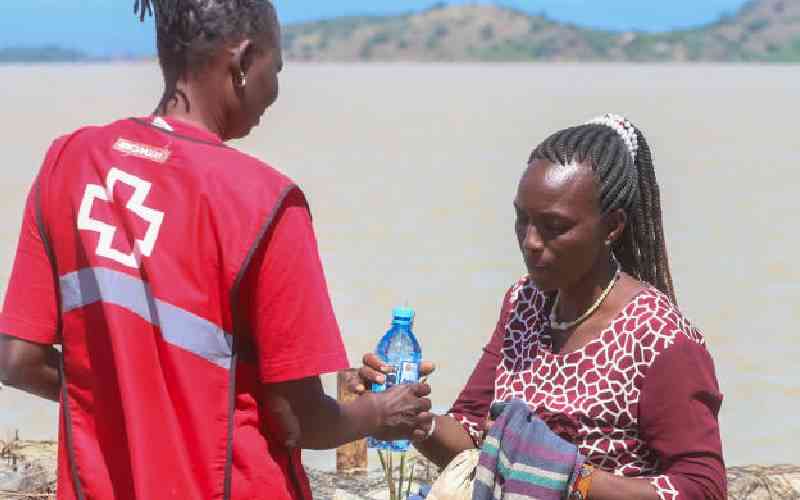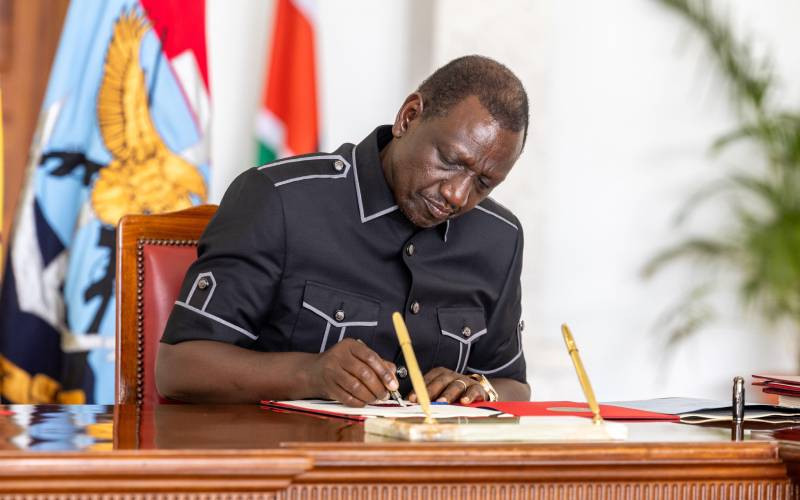The possibility of the repeat Presidential election set for later this month
happening has been opened up to serious public debate and concern following the
withdrawal of Raila Odinga’s candidature.
While the Independent Electoral and Boundaries Commission (IEBC) and Jubilee
Party have clarified and insisted that the election will go on as planned, the
question in the minds of the common man remains; why does the Kenyan Opposition
chief always seem to be frustrating the electoral process?
A keen look at the previous electoral processes that Mr. Odinga has
contested portrays a common trend; he never concedes defeat and will do
whatever it takes to get to the country’s top seat.
1997 ELECTION
This was Mr. Odinga’s first stab at the Presidency in which his National
Development Party (NDP) came a distant third.
Opposition leaders, Mr. Odinga included, jointly contested the elections
results claiming the process was marred with malpractices and irregularities.
Interestingly, Mr. Odinga, was on the side, having parallel negotiations with
President Moi in a bid to join forces.
Some opposition leaders warned him that his deal with KANU would not
materialise. Most significantly, members of the Odinga family called a press
conference to oppose that move but Raila stuck to his guns. Nothing was going
to stop his personal thirst of being in power.
In 1998, NDP and KANU got politically married.
2002 ELECTION
The KANU-NDP cooperation stretched before the 2002 General Election with Mr.
Odinga still his party’s leader expressing willingness to form a Government of
national unity or a coalition government with KANU.
On March 8, 2002 a merger between NDP and KANU was sealed at a colourful
national ceremony at the present day Safaricom Stadium, Kasarani.
The new structure had Mr. Moi as National chairman while Mr. Odinga landed
the most powerful Secretary General seat. Cabinet Ministers, Musalia Mudavadi,
Uhuru Kenyatta, Kalonzo Musyoka and Katana Ngala were elected Vice-chairmen.
This was the moment Mr. Odinga was waiting. To be crowned Moi’s successor.
He was an inch away to the Presidency.
However, Moi threw a spanner into the works and dramatically picked
political novice Uhuru Kenyatta as his preferred successor. Mr. Odinga’s plan
had been scuttled.
Immediately, Mr. Odinga dissented and formed a rebellious alliance with
George Saitoti, Mr Musyoka, and Najib Balala dubbed Rainbow Alliance, within
KANU.
Stay informed. Subscribe to our newsletter
They later joined little known Liberal Democratic Party (LDP), then NAC and
FORD-P to later form the gigantic National Rainbow Coalition (NARC).
Again in this formation, Mr. Odinga hoped to be named flag bearer against
Mwai Kibaki, Kijana Wamalwa, Charity Ngillu, Simeon Nyachae and Kalonzo
Musyoka. Mr. Kibaki carried the day and subsequently became the country’s third
president.
A position of Prime Minister was mooted and it was assumed that with Mr.
Kibaki running for President, the all new powerful Prime Minister's post would
go to Mr. Odinga.
While the presidency had a two-term limit, the proposed Prime Minister's
office had no term limits. Mr. Odinga saw himself ruling forever. This was the
main reason why he backed Mr. Kibaki for the top seat.
The problem with the proposed constitutional changes was that it was based
on an assumption that KANU would win the presidency but the opposition would
have a parliamentary majority. Hence, the executive Prime Minister would come
from the party or coalition with the most seats in the House.
Now that NARC had taken both the presidency and most parliamentary seats,
the purpose of the proposed constitutional changes had been achieved and thus
the Government no longer saw a need to review the Constitution.
2005 REFERENDUM
Once his plans to attain top office were scuttled again, under the LDP
umbrella, Mr. Odinga began campaigning against President Kibaki by engineering
ethnic tension.
Instead of an executive Prime Minister, as was in the 2002 draft, the new
draft proposed that the Presidency retains most of its powers with the Prime
Minister exercising delegated authority.
As expected, Raila rejected the move seeing it as an attempt to rob him of
executive authority. That notwithstanding, the new draft constitution was put
to a referendum.
The Orange alliance led by Mr. Odinga capitalized on the built up tribal
sentiment to mobilise votes against the 2002 draft. A new phrase was coined:
“41-1” meaning that out of the 42 tribes in Kenya, 41 were against the draft.
With a Clear Orange win in this contest, the Odinga-led team was very ecstatic
and called for immediate elections.
2007 ELECTIONS
A new party, Orange Democratic (ODM) Kenya was formed through a merger of
LDP, Labor Party of Kenya and other fringe parties. They had equal say but Mr.
Odinga could not stomach it. He felt he did not have enough control within the
party and thus quickly went in search of lawyer Gitobu Imanyara who owned the original
Orange Democratic Movement (ODM).
Mr. Odinga quickly gained control of ODM and within a short while, he had
made alliances with other politicians to seem to be a national party. They used
the tribal card against President Kibaki, again.
Claims of rigging emerged shortly before the December 27, 2007 elections and
after Kibaki was declared winner and hurriedly sworn in, Mr. Odinga mobilised
his troops and rejected the results.
The country was on the brink of full blown civil war but a negotiated Coalition
government with Mr. Odinga as Prime Minister stopped the bloodbath.
2013 ELECTION
The same script was acted after the hotly contested 2013 elections with Mr.
Odinga’s Coalition for Reforms and Democracy (CORD) of Mr. Musyoka and Moses
Wetang’ula claiming the election was stolen in favour of Uhuru Kenyatta and
William Ruto.
Together with a consortium of civil society groups, CORD petitioned the win
in the Supreme Court. The court affirmed President Kenyatta’s win forcing Raila
to accept the ruling even though he disagreed with it.
The same script of previous elections with Mr. Odinga featuring prominently
happened in this year’s August 8 elections. Kenyans are now even confused
whether a repeat election occasioned by the same man will happen.
WHERE WE ARE
Today, in the hands of one man — Raila Amolo Odinga — the country is staring
at a political and Constitutional crisis with just a few days to Election Day.
He rejected both dates released by IEBC for repeat election and eventually
pulled out of the race claiming the IEBC must be reformed first.
It is therefore clear from the aforementioned cases that ever since the
opposition leader, Raila Amollo Odinga, started contesting for the top office,
he has never won yet in all instances, he has maintained the habit of rejecting
results, attacking constitutional bodies, claiming vote rigging, forcing power
sharing arrangements and causing massive tension across the country for his own
good.
 The Standard Group Plc is a
multi-media organization with investments in media platforms spanning newspaper
print operations, television, radio broadcasting, digital and online services. The
Standard Group is recognized as a leading multi-media house in Kenya with a key
influence in matters of national and international interest.
The Standard Group Plc is a
multi-media organization with investments in media platforms spanning newspaper
print operations, television, radio broadcasting, digital and online services. The
Standard Group is recognized as a leading multi-media house in Kenya with a key
influence in matters of national and international interest.
 The Standard Group Plc is a
multi-media organization with investments in media platforms spanning newspaper
print operations, television, radio broadcasting, digital and online services. The
Standard Group is recognized as a leading multi-media house in Kenya with a key
influence in matters of national and international interest.
The Standard Group Plc is a
multi-media organization with investments in media platforms spanning newspaper
print operations, television, radio broadcasting, digital and online services. The
Standard Group is recognized as a leading multi-media house in Kenya with a key
influence in matters of national and international interest.








